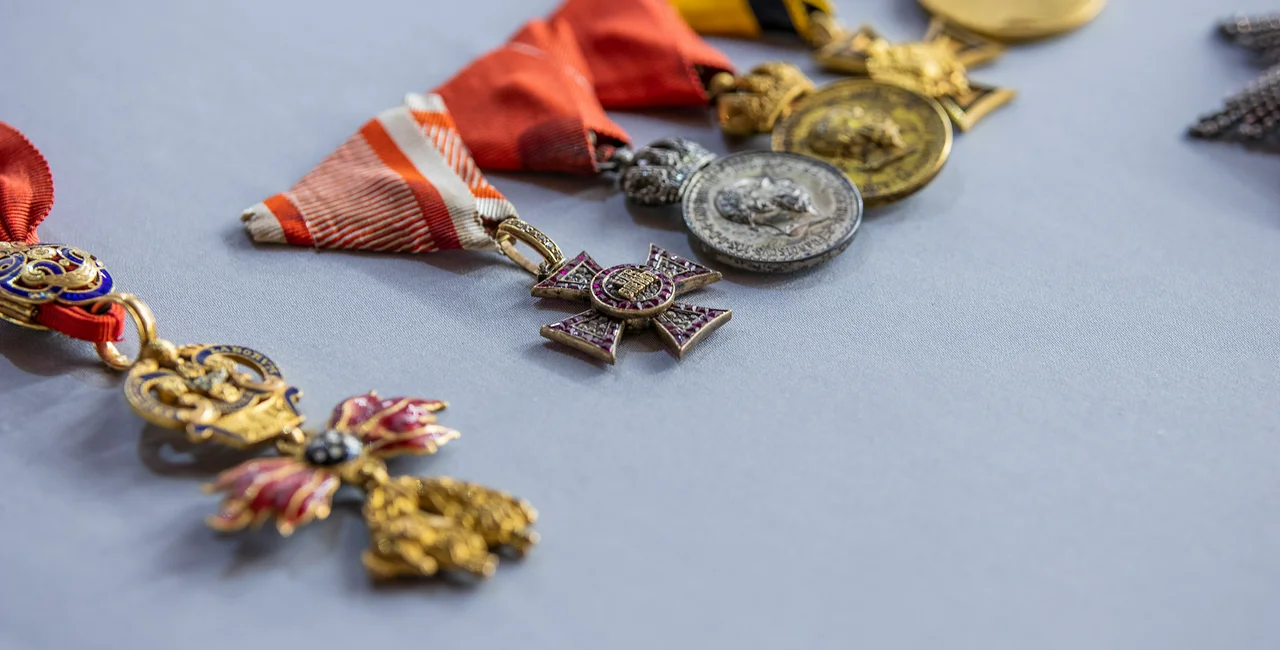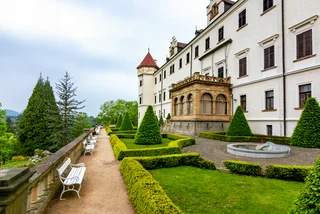The unique military decorations and orders of František Ferdinand d’Este, which the archduke wore on his uniform at the time of his assassination on June 28, 1914, are being prepared for installation in a new permanent exhibition at the National Museum in Prague on the anniversary of his death.
Exactly 107 years since the day Gavrilo Princip assassinated the heir to the Austro-Hungarian throne, Franz Ferdinand d'Este, and his wife, Sophia Chotková in Sarajevo, a unique collection of nine orders and decorations, which the archduke was wearing at the time of the assassination, is being transported to the National Museum.
According to museum representatives, traces of the archduke's blood are still visible on the military decorations which are considered to be of incalculable historical value and will be exhibited for the first time in history in the new exhibition "History of the 20th Century." The exhibit will be open to the public on July 23, 2021.
The orders and decorations worn by the successor to the Austrian-Hungarian throne that day were only a selection of the many Franz Ferdinand d'Este received throughout his life. The domestic Austrian honors characterize the archduke as an officer of the Imperial Army and heir to the throne.

On June 28, following the end of military maneuvers, the delegation planned a visit to Sarajevo. The deadly assassination took place during a trip to the town hall. The murder of the archduke and his pregnant wife shocked the whole of Europe and many historians consider the event a pretext for the proclamation of the First World War.
The archduke's military decorations are a unique monument to a turning point in the history of the 20th century and a rare set of objects of world importance. They include the Knight's Necklace Insignia, as well as the Order of the Golden Fleece, Star of the Grand Cross of the Order of St. Stephen, and the Commemorative Medal for Sea Navigation of 1892. The medals have an overall insured value of an estimated CZK 5,000,000.
František Ferdinand d'Este was the Austrian, Hungarian, and Czech crown prince. He was born December 8, 1863, in Graz. In 1896 he officially succeeded Crown Prince Rudolf to the Habsburg throne. In Prague, he met the young Countess Žofia Chotková from Chotkov and Vojín, a member of an old Czech aristocratic family. Their marriage in 1900 was ancestral, unequal, and frowned upon by Emperor Francis Joseph I.
Together they settled in Konopiště and turned it into one of the most modern furnished aristocratic residences in Central Europe.
"In the coming months, the National Museum will open to the public four permanent exhibitions that will tell the magnificent stories of history through thousands of rare objects and nature. The first of these exhibitions, which will welcome visitors in a month, will be 'History 20th Century,'" says Michal Lukeš CEO of the National Museum.
He goes on to say that the first such extensive and comprehensive exhibition dedicated to the modern history in the Czech Republic will tell visitors the story of the turbulent 20th century across an exhibition area of almost 2,000 m2, including its turning points, but also the stories and lives of ordinary people as well as the centuries that preceded the shots in Sarajevo.
Gavrilo Princip, the man who assassinated Archduke Franz Ferdinand and his wife in Sarajevo was held in Terezín which was used as a prison camp in both World Wars in the 20th century. Princip died of tuberculosis in the prison camp in April 1918. His suspected remains in 1920 were moved from an unmarked grave in Terezín to a chapel in a cemetery in Sarajevo.












 Reading time: 3 minutes
Reading time: 3 minutes 
























